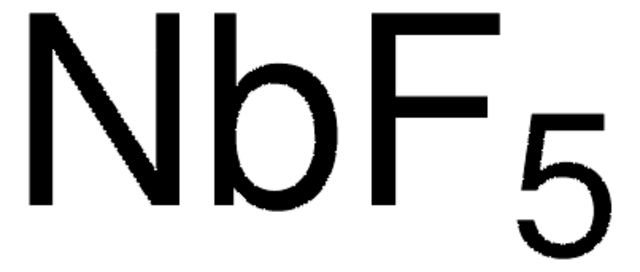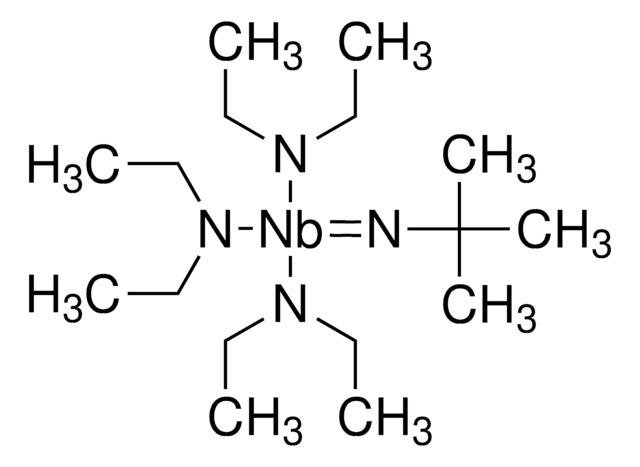If this product has an expiration or retest date, it will be shown on the Certificate of Analysis (COA, CofA). If there is no retest or expiration date listed on the product's COA, we do not have suitable stability data to determine a shelf life. For these products, the only date on the COA will be the release date; a retest, expiration, or use-by-date will not be displayed.
For all products, we recommend handling per defined conditions as printed in our product literature and website product descriptions. We recommend that products should be routinely inspected by customers to ensure they perform as expected.
For products without retest or expiration dates, our standard warranty of 1 year from the date of shipment is applicable.
For more information, please refer to the Product Dating Information document: https://www.sigmaaldrich.com/deepweb/assets/sigmaaldrich/marketing/global/documents/449/386/product-dating-information-mk.pdf
215791
Niobium(V) chloride
99%
Synonym(s):
Niobium pentachloride
Select a Size
Select a Size
About This Item
Recommended Products
Quality Level
Assay
99%
form
powder
technique(s)
FTIR: suitable
bp
254 °C (lit.)
mp
204.7 °C (lit.)
density
2.75 g/mL at 25 °C (lit.)
SMILES string
Cl[Nb](Cl)(Cl)(Cl)Cl
InChI
1S/5ClH.Nb/h5*1H;/q;;;;;+5/p-5
InChI key
YHBDIEWMOMLKOO-UHFFFAOYSA-I
Looking for similar products? Visit Product Comparison Guide
Related Categories
General description
Application
- As a precursor to prepare K2NbF7:Mn4+ red phosphors for white light-emitting diode(LED) devices.[2]
- As a Lewis acid to synthesize fluorescein dye derivatives for dye-sensitized solar cells.[3]
- As a dopant to enhance the thermoelectric properties of n-type tin selenide.[4]
- As a precursor to synthesize Nb2O5 microspheres and TiNb2O7 nanoparticles as high-rate capability and long-cycle-life anode materials for lithium-ion batteries .[5]
Signal Word
Danger
Hazard Statements
Precautionary Statements
Hazard Classifications
Acute Tox. 4 Oral - Eye Dam. 1 - Skin Corr. 1B - STOT SE 3
Target Organs
Respiratory system
Supplementary Hazards
Storage Class Code
8B - Non-combustible corrosive hazardous materials
WGK
WGK 1
Personal Protective Equipment
Choose from one of the most recent versions:
Already Own This Product?
Find documentation for the products that you have recently purchased in the Document Library.
Customers Also Viewed
-
How can I determine the shelf life / expiration / retest date of this product?
1 answer-
Helpful?
-
-
How is shipping temperature determined? And how is it related to the product storage temperature?
1 answer-
Products may be shipped at a different temperature than the recommended long-term storage temperature. If the product quality is sensitive to short-term exposure to conditions other than the recommended long-term storage, it will be shipped on wet or dry-ice. If the product quality is NOT affected by short-term exposure to conditions other than the recommended long-term storage, it will be shipped at ambient temperature. As shipping routes are configured for minimum transit times, shipping at ambient temperature helps control shipping costs for our customers. For more information, please refer to the Storage and Transport Conditions document: https://www.sigmaaldrich.com/deepweb/assets/sigmaaldrich/marketing/global/documents/316/622/storage-transport-conditions-mk.pdf
Helpful?
-
Active Filters
Our team of scientists has experience in all areas of research including Life Science, Material Science, Chemical Synthesis, Chromatography, Analytical and many others.
Contact Technical Service












